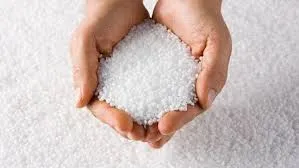Types of Coagulants in Water Treatment
Water treatment is a crucial process that ensures the availability of clean and safe drinking water. One of the fundamental steps in water treatment is coagulation, where coagulants are used to remove suspended solids and impurities from water. This article will explore the different types of coagulants commonly utilized in water treatment, their mechanisms of action, and their advantages and disadvantages.
What Are Coagulants?
Coagulants are chemical substances that facilitate the aggregation of particles in water, leading to the formation of larger particles called flocs. These flocs can then be removed from the water through sedimentation or filtration, thereby improving water quality. The effectiveness of coagulation depends on various factors, including pH, temperature, and the nature of the suspended particles.
Types of Coagulants
Coagulants can be broadly categorized into two groups inorganic coagulants and organic coagulants.
1. Inorganic Coagulants Inorganic coagulants are the most commonly used type of coagulants in water treatment. The following are some of the most widely used inorganic coagulants
- Aluminum Sulfate (Alum) Alum is one of the most prevalent coagulants used in municipal water treatment. It works by neutralizing the negative charges on suspended particles, allowing them to clump together and form larger aggregates. Alum is effective at a wide range of pH levels and is relatively inexpensive.
- Ferric Chloride This coagulant is effective for treating water with high color and turbidity levels. Ferric chloride works similarly to alum, but it can be more effective in certain situations due to its higher charge density. However, ferric chloride can create more sludge, which may complicate the disposal process.
- Ferric Sulfate Similar to ferric chloride, ferric sulfate is another iron-based coagulant that is effective in removing suspended solids and improving water clarity. It has the added advantage of producing less sludge compared to ferric chloride.
- Polyaluimnium Chloride (PAC) PAC is a newer coagulant that has gained popularity in recent years. It works effectively over a range of pH levels and can improve floc formation and settling rates. PAC also produces less sludge, making it easier to manage.
types of coagulants in water treatment pdf

2. Organic Coagulants
Organic coagulants are less commonly used than inorganic coagulants, but they have several unique advantages. These coagulants are typically used in combination with inorganic coagulants to enhance their effectiveness
- Polymeric Coagulants These synthetic coagulants are long-chain molecules that can effectively remove small particles. They can create strong flocs and have been used successfully in various water treatment applications. Polymeric coagulants can operate effectively at lower dosages compared to inorganic coagulants, reducing chemical costs.
- Chitosan Derived from chitin, chitosan is a biodegradable coagulant with potential environmental benefits. It is effective in removing heavy metals and organic pollutants and is well suited for treating wastewater in addition to drinking water.
Advantages and Disadvantages of Coagulants
The choice of coagulant significantly impacts the efficiency and cost-effectiveness of water treatment processes.
Advantages - Inorganic coagulants, particularly alum, are widely available and cost-effective. - They are effective in removing a broad range of pollutants, including sediments, algae, and organic matter. - Coagulants like PAC can improve operational efficiency, leading to lower sludge production.
Disadvantages - Some inorganic coagulants can produce large volumes of sludge that require proper disposal. - The residual chemicals can affect the taste and odor of treated water if not adequately managed. - Organic coagulants can be more expensive than inorganic options, although they may provide better performance in specific applications.
Conclusion
Coagulants play a vital role in water treatment by enhancing the removal of impurities and ensuring the supply of clean drinking water. The choice of coagulant depends on various factors, including the specific characteristics of the water being treated and regulatory requirements. By understanding the different types of coagulants and their benefits and drawbacks, water treatment facilities can optimize their processes to deliver safe and clean water to communities.

